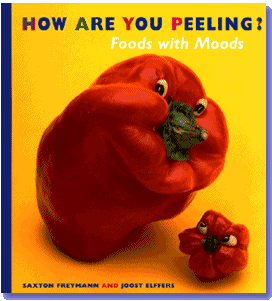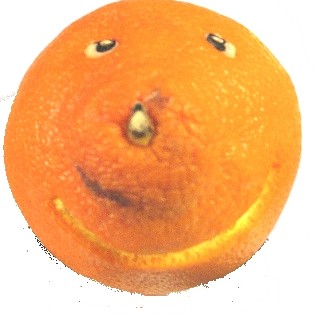VARIETY IS THE SPICE OF LIFE How magazines can be a great reading and learning resource for children Praba Ram & Meera SriramWe have always been riveted to books as a nourishing source of learning and fun for children. An equally amazing alternative to books are magazines - a periodic dose of information and amusement. Pleasantly entertaining, they are typically filled with pictures, articles, stories, games and activities. The most exciting aspect of a magazine for a child can be its arrival, when the long wait climaxes at an unexpected moment. Children often look forward to a character that appears regularly, the next chapter in a suspended story, a familiar comic strip or for simple brainteasers. All wrapped up in one neat package. Whether at home, on the move or simply for the painful wait at the doctor's office, a copy can come in handy.
We will now discuss the options to get our hands on this wonderful resource.
Here in the U.S, a mainstream option, and by that we mean non-multicultural in nature, comes from
Carus Publishing.
• The wonderful thing about them is that they cater even to the 6 months-3yrs age group.
BABYBUG is what the magazine is called. This can be helpful when the issue in the mail comes to the timely rescue of a bored toddler and the familiar topography of the books can trigger an instant million dollar smile (and not to worry, it comes in cardboard pages)!
•
LADYBUG is the equivalent for the 3-6 age group. "Written by some of the world's best children's authors and illustrated by award-winning artists, LADYBUG is sure to spark young imaginations and develop a love of reading that will last a lifetime." says the description.
•
CLICK is the science and exploration specific for the similar age group. It seems to be an award-magnet! Great to answer the WHYs, WHATs and HOWs that are thrown at you by the curious little one.
The options seem to increase with increasing age groups when children start looking for specific interests.
Below is the link to their home page -
http://www.cricketmag.com/home.asp The magazines are presented here -
http://www.cricketmag.com/shop_magzines.asp Sample pages are also shown and this can aid you in decision making. You can pick the 1 year or 2 year subscription option. However, just like most subscriptions, it might take 4-6 weeks for the first issue to appear. The website also offers a wide product range of books, gifts and other media items for different age groups.
Now moving on to magazines in the multi-cultural space. We found that in this category, there are two overarching types - 1) cross-cultural children’s magazines that reflect one’s own culture – say Indian American, Chinese American etc. and 2) multi-cultural magazines that provide an overall exposure to stories from different cultures around the world. Offering both can help give our children a well-rounded exposure to multiculturalism, and help appreciate stories and experiences of children from all around the world.
In particular, we would like to focus on the following three cross and multi-cultural magazines that captured our interest.
•
KAHANI is indeed a welcoming addition to the world of cross-cultural children’s literature. The magazine features stories, ideas, and the unique experiences of children of South-Asian descent. The magazine has won the Parent Choice Approved Award for 2007, given by the Parents Choice Foundation, a respected organization on children’s media. The magazine is published four times in a year – one every season and with a new theme every time - varying from holidays to sports, which are just a few examples of the diverse set of themes covered in every issue. Their mission is to “empower, educate, and entertain children of South-Asian descent.” The magazine offers an eclectic blend of short stories, math and science columns, book reviews, interactive activities such as puzzles, comic series, biography series, and other non-fiction articles. It is a one-shop-stop for Indian American parents to help their kids to express and explore their cultural identities. (
http://kahani.com – Age group: elementary to middle school)
•
SKIPPING STONES, yet another award winning nonprofit magazine for youth is a noteworthy resource in multi-cultural education. The magazine, provides opportunities to children around the world from “different countries and cultures” to express and share their ideas and experiences. Their mission is to “encourage communication, cooperation, creativity and celebration of cultural and environmental richness.” Skipping Stones is published bimonthly during the school year. Each issue features stories, articles and photos from all over the world – as described on their website, an issue of Skipping Stone features “Native American folktales, photos from kids in India and the Ukraine, letters and drawings from South Africa and Lithuania, cartoons from China, and more might await you.” Skipping Stone invites children and adults of all ages to contribute in any language. In the case of non-English articles, English translations are provided along with the article, and the magazine thereby, provides opportunities to appreciate other languages. (Click here -
http://www.skippingstones.org/ - for more information on Skipping Stones)
•
FACES, (9-14 age group), again, from Carus Publishing. Taking off of what they claim - "FACES readers learn how other kids live around the world and about the important inventions and ideas that a particular culture has given to the world. Recipes, hands-on projects, and book and video recommendations help kids further explore each issue's topic. Also, the Winner of the 2007 Parents' Choice Silver Honor, it gives children the opportunity and awareness to experience multi-culturalism and diversity.
Children's magazines - sit back and watch them explore, learn and smile!
 Who Are You, Baby Kangaroo?
Who Are You, Baby Kangaroo?





